Interview with Christine Wong Yap
Artist Interviews blog Ten Banners for Home and Office TPG21
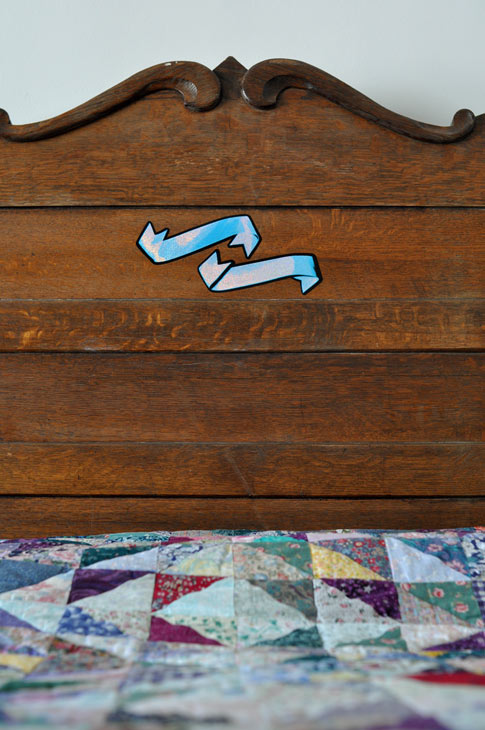
blog Ten Banners for Home and Office TPG21
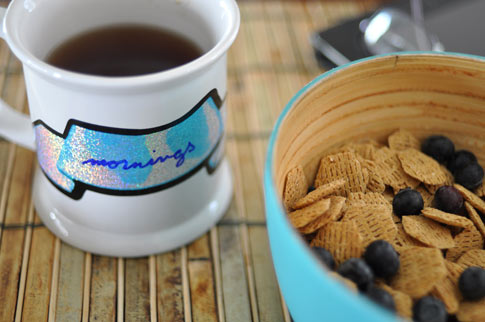
By artist Christine Wong Yap, Ten Banners for Home and Office is an edition of 50 three color silk-screened holographic glitter vinyl posters with 8 peel off stickers. This super-sized sticker sheet reminds us that everyday there is something worthy of a little recognition and exaltation. Whether or not you actually fill in the blank stickers or ever remove them from their backing sheet, they act as both an invitation and a challenge to focus on the good parts of everyday.
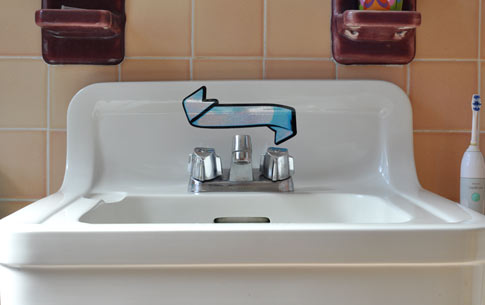
Christine Wong Yap is an interdisciplinary artist working in installations, sculptures, multiples, and works on paper to explore optimism and pessimism. Her work examines the paradox that mundane materials or situations can give rise to irrational expectations, emotions, and experiences. Major touchstones are language, light and dark, and psychology. Her work has been exhibited extensively in the San Francisco Bay Area, as well as in New York, Los Angeles, Manila, Osaka, London, Newcastle, and Manchester (U.K). Born in California, Yap holds a BFA and MFA from the California College of the Arts. A longtime resident of Oakland, CA, she relocated to New York, NY in 2010.
arts funding blog news show me the money
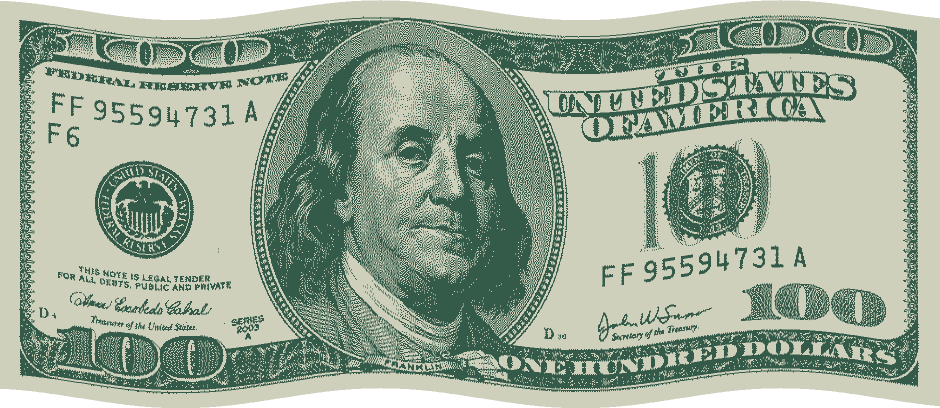
For quite some time, Oliver and I have been talking about a project we’ve been calling Show Me the Money. Sometimes our projects take a lot of time living in the back of our heads before they become a reality. Years ago, we were thinking that it would be great to diagram out how the money works for different types of organizations, businesses, and artists in the art world just so we could simply see it. But that didn’t happen, or hasn’t happened yet.
At the beginning of this year, we started thinking critically about The Present Group and how it could change and adapt so that we could become more stable (more on that later). During this time, I started thinking again about Show Me the Money and how I wished I had already done it, how it seems so necessary, how I can’t believe someone else hasn’t done it. So I went ahead and emailed one of my favorite Bay Area platforms for conversation, the SFMOMA blog, to see if they were interested in the idea. Turns out, they were.
So today, I’ve posted a little introduction to the project as a whole. I’m really excited and slightly nervous about it all, but I am really looking forward to it. With a little bit of optimism and hope, I’m about embark on asking people to talk about a subject that almost everyone avoids: money.
Here’s a snippet:
The visual arts, as a discipline, is sometimes seen as a place where one can and should freely explore and produce independently of the market. It is with this optimism and drive to work without financial reward that so many people pursue the creation of their own organizational structures. This freedom can be a fertile and productive place from which to practice, but it comes with a price of perception and expectation: creative work is generally under-compensated (because you were going to do it anyway), general operating costs are ignored in funding proposals, installations are installed without fees, and exposure is offered as payment all throughout the chain.
..There is a prevalent belief in our country that if you work hard enough you’ll be able to “make it.” If you do something good long enough, people will notice. But as any artist, small businessperson, or organization head will tell you, this just isn’t true.
bay area blog events internet news talking web hosting
So we’ve decided to team up with Southern Exposure in order to teach a class on how to do just that. Sign up – space is limited.
art and food bay area blog events good things news outside TPG21
This Saturday, September 15th, join us in celebrating Headlands‘ major accomplishment: 30 years of supporting art and artists. It’s going to be fun. This one day, family-friendly, artist-driven festival in the Fort Barry Parade Ground of the Marin Headlands will feature an array of artist projects, games, musical entertainment, bike & surf activities, artist-led hikes, hands-on projects, and local artisan vendor booths for the delight of party-goers of all ages.
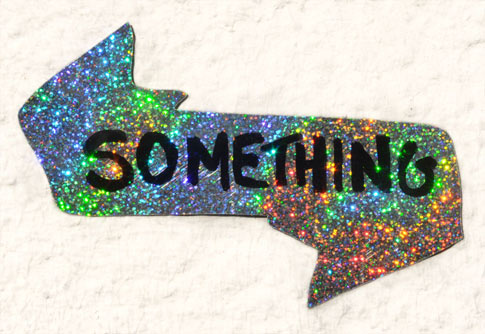
This week we’ll be finally sending out TPG21 and will be using this opportunity not only to sell our backissues in a TPG Pop-Up Shop, but also to have a little release party of sorts, with a activity led from afar by artist Christine Wong Yap. We’ll be encouraging fair goers to take a moment to Celebrate Something in sparkles.
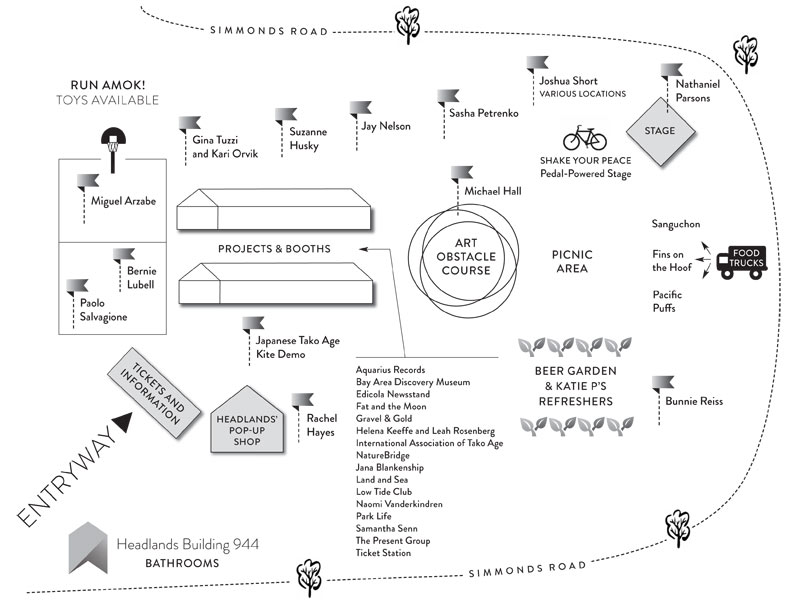
Over a dozen artists have been commissioned to present interactive contraptions, custom-designed pods, and games at the party. Curl up inside one of Suzanne Husky‘s “Sleeper Cells;” use plant-dye to design a custom handkerchief with TPG 11 artist Helena Keeffe; make a mini-succulent garden with Sausalito’s The Low Tide Club; and peruse original artist prints and multiples for sale by Park Life and The Present Group. Enjoy music, dancing, and tasty treats.
blog The Present Prize web hosting
The Hostees have spoken! 51 contributions made up a $1224 Prize for one artist whose work exists on the internet. 204 public voters narrowed down the field of 14 nominated works to three, and now the choice has been made.
We’re going to celebrate with Packard next Thursday September 6th and hand over a big check in Lake Merritt park for a lovely evening happy hour from 5-6:30 pm. You should join us. We’ll be here.
Congratulations to Packard Jennings for Destructables.org!
Destructables.org is an advertising free Do It Yourself website for projects of protest and creative dissent. The site features user generated step-by-step video and photo/text based instructions for a wide range of dissenting actions, including (but not limited to): art actions, billboard alterations, shop-dropping, protest strategies, knit-bombing, making protest props, interventions, methods of civil disobedience, stencil work, performative actions, and many other forms of public dissent – from the practical and tactical to the creative and illegal. It is a living archive and resource for the art and activist communities.
Destructables was developed with a few basic ideas in mind:
Dissent is necessary for a healthy society.
Public space is politicized.
Resistance and protest needs constant re-invention.
Thanks to 204 voters who cast a grand total of 3,152 votes, public voting for the Present Prize is complete! We’d like to congratulate our three finalists: Maria Molteni, Packard Jennings, and collaborators Carlos Saez and Claudia Mate.
It was a very close race and other competitors were not far behind.
About half of people coming to the site voted just once, indicating a direct link from that artist’s social network. However, the second highest percentage of people (ten percent,) took the opportunity to vote on all 91 matchups, making their opinion heard in much greater force. Of the remaining 40%, people seemed to tire out of voting all across the gamut. While the direct links certainly had an impact on the final results, as soon as people voted more than once, they contributed to a scenario where the effect of internet popularity was diluted.
Here are the the three finalists again. It’s interesting to note that each of these winning works engage a larger community as contributors to their projects.
Cloaque by Carlos Saez and Claudia Mate
“Cloaque works as a digital landfill. It is the result of the collection, treatment and joining together of a series of images found online or self produced work, to create a column of digital compost. It is a collaborative project hosted on a tumblr platform where artists are invited to continue the previous work developing an endless vertical collage.”
Claudia Maté is a spanish web developer working on a large area of online based projects. She experiments with different programation languages and 3D softwares, using platforms as Tumblr and exploring new posibilities with HTML5.
Carlos Saez is a multidisciplinary artist. He has been working in fashion, creating his own brand. Also with video through his audiovisual project Multi-Movies and lately as creative director of Room Mate Hotels.
New Craft Artists in Action by Maria Molteni
“The NCAA team captain launched MOLTENi Net Works in response to cases of Empty Net Syndrome in Boston. This yarn-bomb initiative, executed via workshops, pickup games & internet cataloging, aims to create functional, hand-crafted basketball nets for neglected public hoops. Inspired by a mapping process and DIY form of slow production, we make use of neglected courts & the internet as public venues across the globe. The project aims to build pro-active relationships between artists, athletes, & neighbors, tracing connections between such networks via hoop coordinates logged on our public gmap. When it comes to love for the NET, NCAA assumes Triple Threat.”
Maria Molteni grew up in Nashville, TN, a misfit in the bible belt where differences are settled on the court. Swallowed by team jerseys for 10 years, she swore to become an “Art & Basketball Star”. Her neighbors expressed their support via MOLTEN brand basketballs with bold i ’s scribbled on the end. This anecdote illustrates concepts & processes of Maria’s current practice, approaching art as the reassessment of authorship via appropriation/technology & expression of support/protest by DIY craft.
Destructables.org by Packard Jennings
Destructables.org is an advertising free Do It Yourself website for projects of protest and creative dissent. The site features user generated step-by-step video and photo/text based instructions for a wide range of dissenting actions, including (but not limited to): art actions, billboard alterations, shop-dropping, protest strategies, knit-bombing, making protest props, interventions, methods of civil disobedience, stencil work, performative actions, and many other forms of public dissent – from the practical and tactical to the creative and illegal. It is a living archive and resource for the art and activist communities.
Packard Jennings is a visual artist who uses appropriation, humor and interventionist tactics to address political and corporate transgressions against public interests. A native of Oakland, California, he received his MFA from Alfred University in New York. He has garnered critical attention across a variety of media, including: Artforum, Playboy, Flash Art, the Believer, New American Painting, the Washington Post, and the front page of the New York Times.
Now it is up to our grant contributors to pick a final winner! If you are a TPG web hostee or a buy-in contributor, go here to cast your final vote.
From the good people at Temporary Services and Half Letter Press, a commissioning/art subscription program. I’m a little confused about whether this is ongoing or if there are only these two artists: Matthew Friday & Claire Pentecost, but either way it seems like an interesting series:
Regional Relationships commissions artists, scholars, writers and activists to create works that investigate the natural, industrial and cultural landscapes of a region. It is a platform to re-imagine the spaces and cultural histories around us. An invitation to join in seeing what we can learn—and learning what we can see—by juxtaposing spaces and narratives that are usually kept apart.
Hello!
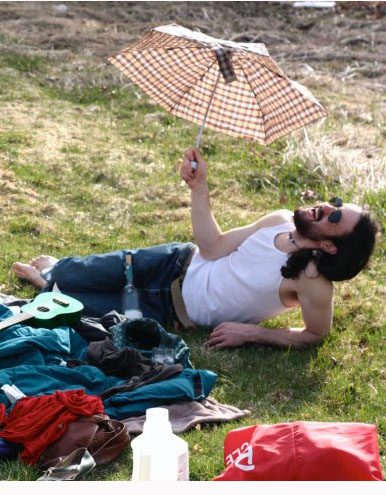
I am Matt, the new Present Group intern. This year I came to realize that the place I live (Maine) is quite nice, and if I were to spend too many more summers in place, I would wake up one day and find myself retired there. So I set out on a search for new places and ways. I did my share of asking around; I queried friends, enemies, frienemies and a gaggle of left handed mittens that had been abandoned in the gutter. I came across many good suggestions (the mittens of course suggested Ottawa) but could not make a decision.
At a loss, I had resigned myself to do things the old fashioned way: chance. Now chance is generally not something to mess with so I wanted to make sure I did it right. I figured that the combination of a spinning classroom globe, a throwing dart and a bottle of whiskey ought to yield a significantly indeterminate location.
On my way to the whole spinning globe/spinning room conundrum I was however blessedly interrupted. It was not by a person or animal, rather the interruption came in the form of a clean looking wooden box. In bright friendly letters it said very plainly, “I want you to have this” It was very clearly a gift, for me! After a little research I realized I had found issue 17 of The Present Group’s art subscription (I Want You to Have This). Several emails later I had an internship in Oakland.
I have been interested in social entrepreneurship for some time and I am happy to start work here at Present Group HQ. We’ve got the wholesomeness of community supported agriculture without excesses in the kale department. Plus mail always felt kind of like a present to me, so to work for a place that sends presents through the mail…
I am told we will begin today by cutting sparkles.
arts funding blog internet news public art The Present Prize web hosting
Over the next few weeks, we’ll be getting some additional information from these artists and building a platform for the public voting phase. In the meantime, get to know the projects!
We Who Feel Differently by Carlos Motta
Supercruft and Live Disasters by Andrew Venell
NSKYC by Mike Bodge
http://the389.com/10/3/ by Andrey Yazev
Cultural Differences by Taryn Simon and Aaron Swartz (declined to participate)
Cloaque founded by Carlos Saez and Claudia Mate
Open_Close.txt and The Internet Makes Me Happy by Emilio Gomariz
destructables.org by Packard Jennings
C RED BLUE J by Chris Sollars
HD Jellyfish Footage by Julian Dawe (declined to participate)
Peter Hasson: Praying Ping Pong by Jesse Nichols
www.putitonapedestal.com by Anthony Antonellis
Molteni Net Works by Maria Molteni and the New Craft Artists in Action
Sanctuary by Aaron Vincent Elkaim
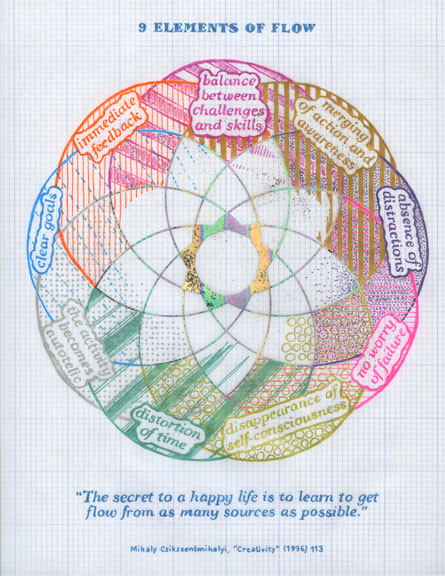
We’re very pleased to announce that the artist for TPG #21 is Christine Wong Yap.
Christine Wong Yap is an interdisciplinary artist working in installations, sculptures, multiples, and works on paper to explore optimism and pessimism. Her work examines the paradox that mundane materials or situations can give rise to irrational expectations, emotions, and experiences. Major touchstones are language, light and dark, and psychology. Her work has been exhibited extensively in the San Francisco Bay Area, as well as in New York, Los Angeles, Manila, Osaka, London, Newcastle, and Manchester (U.K). Born in California, Yap holds a BFA and MFA from the California College of the Arts. A longtime resident of Oakland, CA, she relocated to New York, NY in 2010.
art fairs bay area blog pictures
There is something gross about art fairs. The wealth, the striped down-ness of the presentation of the works, the way that art becomes less about ideas and more about what someone wants to put on their walls. But there is also something really great. This year it hasn’t been the easiest for me to get out and wander galleries, go to openings that happen at baby bedtimes, and see much art, period. So really, getting to see hundreds of artists’ works all at once, during the day, was an opportunity I couldn’t refuse. I’m sure that I missed some things, but nevertheless here are my highlights:
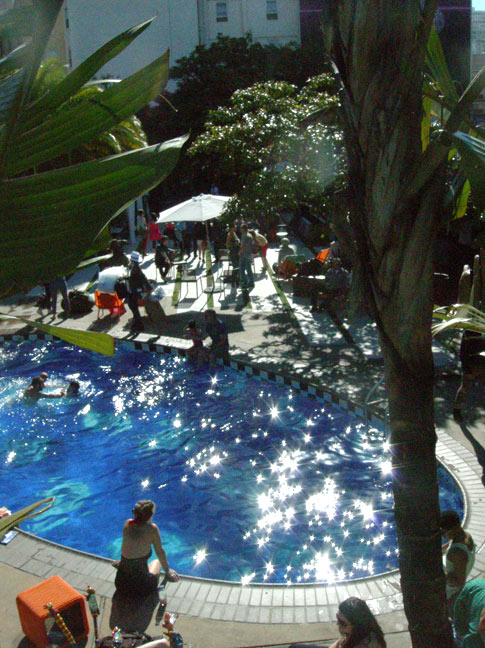
Oh my goodness. The scene at ArtPadSF was a hipster summer dream. Bands, neon colors, beers and coolness abounded.
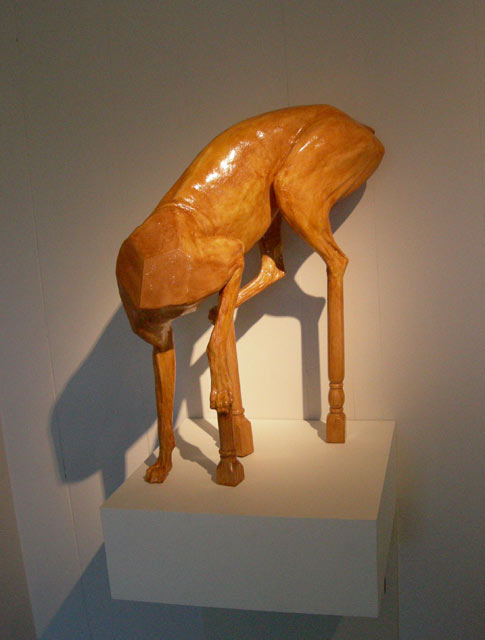 Misako_Inaoka at Johannson Projects
Misako_Inaoka at Johannson Projects
Descend
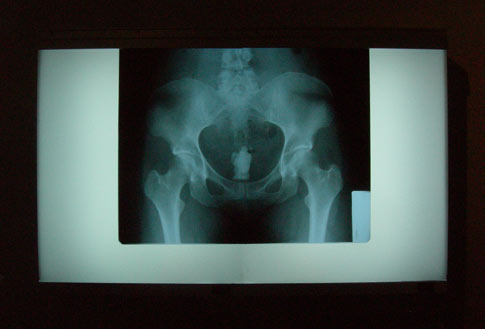 Noelle Mason at Thomas Robertello Gallery
Noelle Mason at Thomas Robertello Gallery
HKG-ORD (mule), 2007
That’s an ivory budda that she smuggled in to the US from Hong Kong in her vagina.
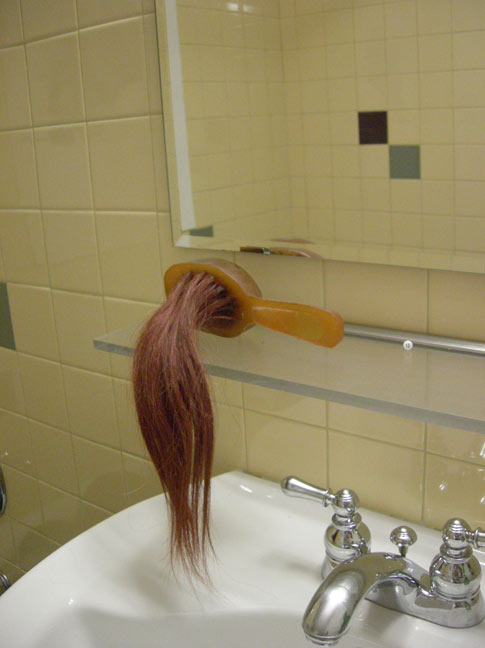 Kerry Vander Meer at Mercury 20
Kerry Vander Meer at Mercury 20
best bathroom art that I saw. It seemed like there was something interesting happening in the Creativity Explored bathroom, but it was too darn crowded that I couldn’t get in.
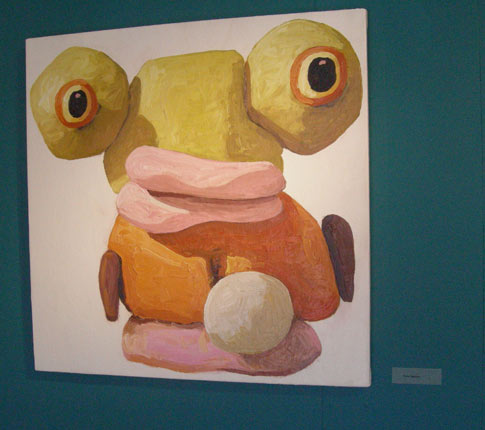 Peter Opheim at Steven Zevitas Gallery
Peter Opheim at Steven Zevitas Gallery
Untitled (155)
The artMRKT was much more art fair-y. My main gripe was it seemed like it was largely overhung. It was somewhat commonplace to see galleries trying to get a lot of bang for their buck, showing 6-8 artists at a time. While I have to admit that I was a speed-fairing since there was a baby on my belly, I wanted less artists and more from each. Also, there was a (Ever-Gold) gallery-sponsored and fair-approved “Occupy Art Fairs” thing going on that seemed, well, a little trite.
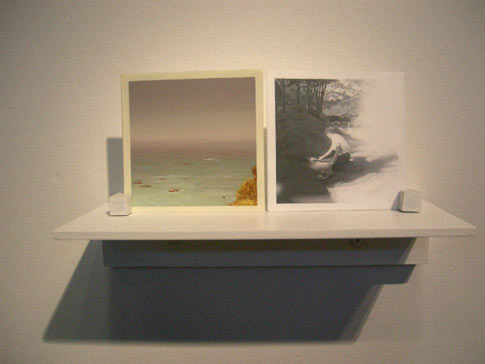 Elisheva Biernoff at Eli Ridgeway
Elisheva Biernoff at Eli Ridgeway
castaneda/reiman at DCKT Contemporary
Their installation at the SF Fine Art Fair two years ago has really stuck with me. Every time I see their work I like it more.
Cara Barer at Andrea Schwartz Gallery
Sheer Madness
Sandow Birk and Elyse Pignolet at Catherine Clarke Gallery
Map of the Known World, 2011
There was no way to get a good picture of this. Birk has an image on his website. I’m a sucker for maps. I like how their work makes evident what is hidden on most maps: that the person drawing it is giving you their view of the world.
A different kind of warmth Annotated Links art and craft art and food blog TPG20
Julia’s Links:
Dard Hunter collection: Dard Hunter was responsible for a renaissance in hand papermaking and printing. From 1923 to 1950, his Mountain Home Press produced eight limited-edition books that stand as testaments to his devotion and perseverance. Today, most of the historians and artisans interested in papermaking and printing were directly inspired by Hunter.
Dieu Donne: a non-profit organization dedicated to the creation, promotion, and preservation of new contemporary art utilizing the hand papermaking process. I did a residency here.
Baker Creek Heirloom Seeds : Seed bank…where i get the seeds for the beet i grew…I didn’t grow nearly all of them…but some
Paper Project Scanning Electron Microscope Images of Paper: I love these magnified images…I used some in a talk I gave last week to show the difference between paper and papyrus
and…Oregon Caves National Monument
and Lava Beds National Monument
Other Links:
Examples of other types of fruit and vegetable papyrus
Artists working with food/food concepts/growing things:
Open Restaurant: OPENrestaurant is the project of a collective of restaurant professionals who moved their environment to an art space as a way to experiment with the language of their daily activities. This displacement turns the restaurant, its codes and architecture, into a medium for artistic expression which is made available to cooks, farmers, artists, educators and activists as a way to explore issues around food and society.
Pietopia: This is a once a year event where participants submit any pie recipe and 300 word written explanation about how your life tastes, in a pie. The entries go through a judging process of nationally recognized food writers and bakers. Over the course of several weeks, pies are judged upon the creativity and innovation in ideas reflecting the ingredients used in the recipe by a group of nationally recognized food-writers and chefs. run by Tricia Martin, eating is art
Conflict Kitchen: a take-out restaurant that only serves cuisine from countries with which the United States is in conflict. The food is served out of a take-out-style storefront that rotates identities every six months to highlight another country. Each iteration of the project is augmented by events, performances, and discussions that seek to expand the engagement the public has with the culture, politics, and issues at stake within the focus country.
Artists working with paper:
A different kind of warmth blog contemporary art criticism TPG20
Is there a material more often overlooked than paper? Our everyday lives are full of it: receipts and packaging from purchases; flyers, wheat-pasted movie ads and parking tickets; to say nothing of the papers that record our private thoughts and then carry them over distances. It is the ubiquity of this humble material that almost guarantees that it be disregarded. In order to reconsider paper, it must be presented to us in a form that we have not seen before, provoking a reaction of surprise before we settle into the reassuring feeling of prior knowledge and connection.
Julia Goodman’s work often provides this provocation, enlivening the familiar by making it temporarily strange. Her edition for The Present Group is mysterious and intriguing. At first, you might only marvel at the colors of the beet papyrus: a gentle spectrum of deep reds and purples, along with some yellow or white, plus a bit of dark green or black along the margins. Then comes the question of the material itself: What is it? Beet slices, cut thin to the point of translucency, then overlapped and dried. And then an inspection of minutiae, tinged with pragmatism: Are the slices stitched? How do they hold together? You might be surprised to find that the papyrus is a bit of ordinary magic, conjured from common materials and simple processes to make a symbolic object.
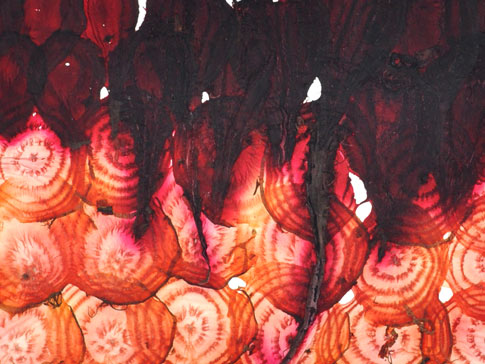
Physically and conceptually, Goodman’s beet papyrus is centered on the notion of overlap. Synonyms for this verb evoke the phenomenal or concrete: imbricate, overhang, protrude, shingle. These words focus on materiality and mass, on the edges of substances that meet in a certain physical arrangement. Yet overlap is also connected to the more abstract concept of coinciding or having in common. Both forms of overlap, the action and the idea, are central to Goodman’s art practice.
When I met her in 2009, Goodman was making work from junk mail, an exploration of materials that grew out of her interest in economics and sustainability. Using these repurposed communications, she created small sculptural objects and wheat-pasted them in urban locations, bringing handmade and ephemeral forms to hard, industrial surfaces. With these works, Goodman juxtaposed fragility and softness to concrete, creating an overlap where, for a time, opposing textures existed in the same space. What has always struck me about her work is that it is made from broken-down or divided and recombined substances. Goodman’s work reduces a material all the way to its basic form, and then rebuilds it into something new.
Goodman is grounded foremost in process, so to understand the idiosyncrasies of papermaking is in some way to enter the mind of the artist, because the process of papermaking may be the ultimate physical expression of having in common. Its manufacture is simple: first, plant fibers are broken down, and then the fibers are allowed to reconnect. Specifically, the fibers are bruised and opened while in a water bath, and then as water is extracted from this slurry the fibers re-bond, linking themselves back together in endless networks that take the shape of the mold they are in, be it flat (as in sheet of handmade paper) or a more sculptural form.
In part, Goodman makes paper because she loves working with her hands and believes in making art that is the result of direct touch. She tells me, “There is nothing between my hands and my materials—no brush or pencil,” and her direct physical engagement with the work is evident at every stage, from the tearing of fibers or cutting of beets to the process for extracting the water from the paper: pressing it with her hands, pushing it into a wooden mold, even stepping or standing on it to push the liquid out of the interlocking fibers.
The making of this edition was no different in terms of physical involvement. Like traditional papyrus, in which the fibers are not bruised or opened but laminated in layers, each beet was harvested, sliced thin on a mandoline, then arranged with other, differently-colored beet segments on a white cloth, and finally pressed and dried. Under pressure, the cut beet fibers rebond, grabbing onto each other and reconnecting to form a new whole. There is no stitching, and no adhesives are used; the process is both deliberate and organic, with Goodman controlling the circumstances but letting the fibers do what comes naturally. While drying, the beet papyrus shrinks and stains the cloth beneath, and that stain becomes evidence of the original form and records a history of the process.
Papyrus is a material that is sensitive to its environment. Expect your beet papyrus to respond to the weather, reabsorbing ambient moisture and re-drying as the barometer rises and falls. At every level, this form of paper is physically reactive and mutable, from the individual cut fibers that reach toward reconnection, to the final piece that shifts almost imperceptibly to match the circumstances of its surroundings. Papyrus is a basic form of paper, and paper is a recording device.
Goodman grew many of the beets for this project and purchased the others from local farmer’s markets. That means that the papyrus was produced in this area, from seed to final paper. It is intensely connected to the geography, climate, and labor of the Bay Area. Further, the fact that it is still potentially edible brings the beet papyrus back to physicality, an overlap between the body, the material, and the process. In her studio, Goodman shows me her bag of food, including beets, from the farmer’s market. “My groceries and my art supplies are in the same place, touching. There is no need to separate my art practice from my life.”
Bean Gilsdorf is an artist and writer. Her exhibition reviews and interviews have been included in print and online publications such as Textile: the Journal of Cloth and Culture, Fiberarts Magazine (2007-2011), Daily Serving and Art Practical. For Daily Serving, she also writes the weekly arts-advice column HELP DESK, co-sponsored by KQED.org and reprinted at HuffingtonPost.com. Gilsdorf is a 2011-2012 MFA Fellowship Resident at the Headlands Center for the Arts. She lives in San Francisco.
A different kind of warmth Artist Interviews blog TPG20
We interviewed Julia in our home on March 18th, 2012.
A different kind of warmth blog TPG20
“A different kind of warmth” is a series of 50 beet papyrus compositions and stains created by artist Julia Goodman. Grown in her garden, hand picked, sliced and pressed, Julia’s beets are part of an artistic practiced centered on strengthening the connection between our natural and man-made environment. Even her leathery yet delicate works reflect this intimate relationship, softening or becoming brittle with the humidity, or changing color in response to the sun. Each set includes the beet-stained cloth used to press her papyrus, which exists as both a document of the process and a shadowy work in its own right.
Julia Goodman earned her BA in International Relations and Peace & Justice Studies at Tufts University in 2001. She began making paper in her backyard in 2003 and completed her Master’s in Fine Arts at the California College of the Arts in May 2009. Since graduating she spent the summer in Inverness, California at the JB Blunk Residency and the fall in New York, completing a studio internship at Dieu Donne papermaking studio. In 2012, Julia looks forward to two artist residencies, one on a small farm near lava flow in Hawaii and the other at “the dump,” through Recology San Francisco. Her work has exhibited widely throughout California, and in New York, Washington DC, and Gothenberg, Sweden. Currently, Julia is living and working in San Francisco.
Art Micro Patronage arts funding blog contemporary art criticism internet new models the exposure problem
Nicolas O’Brien, one of the artists in the current Art Micro Patronage show, “Can’t Touch This” curated by Karen Archey, also writes a column entitled Hyperjunk on the Bad at Sports blog. He was kind enough to include us in his most recent post, ”Hyperjunk: Observations on the Proliferation of Online Galleries,” a thoughtful survey and analysis of current online galleries.
However, there are a couple of points in the article that caught our attention, specifically in regards to our project. In the spirit of keeping the conversation going, we’ve included some responses below:
If an ideal environment of an artists working online lies within the personal computing web-browsing experience, then why the need for relocating these works into another specific website/framing? What is “more accessible” about an online gallery then an artists personal website? Are the tropes from the traditional gallery system still playing too significant a role in the way in which net-art is being presented?
With Art Micro Patronage the idea of the curated group show is central. We’re trying to encourage criticality about what is happening online by hiring curators to bring together artists whose work explores similar themes. The internet is incredibly diverse and far flung which makes the process of synthesis and curation that much more important. I trust some institutions and curators to do the research and outreach to bring to my attention artists whose work I may not have been exposed to otherwise, but also to highlight what is happening more broadly. So maybe it’s not the works themselves that are rendered more accessible, but rather the connections between them.
To favor one system over the other, or to underscore the supposed ignorance of major cultural institutions for not having more net based art, can position the artist, work, or community as having ingrained entitlement due to its novelty.
I’m not sure I agree that it deserves entitlement due to its novelty. In the late 90′s and early 2000′s there were quite a few institutions that were collecting and attempting to show net art. But most gave it up. At that point there was an exuberance about the novelty of anything and everything that was happening online. However now I believe we’re at the point where the technology has caught up and the novelty has died down, and because it is so ingrained in our culture, the work that is happening online in a cultural context deserves critical attention. It was in part the recognition that artists working online isn’t novel at all that motivated us to do this project.
Further, we hope to continue expanding the idea of what is considered “netart”. We intentionally found curators working in diverse parts of the artworld in order to cull different works and types of shows. For example, our next show curated by Dena Beard highlights the work of primarily social practice and conceptual artists who use the web to document their more ephemeral practice or as a site of exchange. While these may not be “net artists”, the internet is an important part of their practice.
bay area blog collecting resources subscription art
We love it! In honor of their fiftieth issue, “Printed Matter,” Art Practical is embarking on a new venture that rethinks how their editorial work could reach an audience and enter their homes and lives. Each month for 6 months a different artist will choose an article that resonates with them from the AP archive, create an offset limited edition print in response, and send each subscriber a postcard, the print, and the original article. It is limited to 150 subscribers and costs $150 for the six month subscription.
Learn more about AP’s Mail Art Subscription>>
From the site:
In conjunction with “Printed Matter,” and in honor of our fiftieth issue, we want to encourage you, our readers, to think about the value that exists in both the undifferentiated and ready access to information, ideas, and archives that online publishing grants and about the intimacy of a hand-addressed envelope intended for a single individual. In some sense, to consider how Art Practical might arrive in your mailbox.
Lego Hello World
I wish all my printers were made of legos.
LIFE photo archive hosted by Google
Images from Life Magazine going back to 1860′s, hosted by Google
Coming Face To Face With The President
Well crafted story about an under-heard point of view.
In California, Pot Is Now an Art Patron
A new funding source for the arts – reaping big rewards and funding many projects. It’s pot.
Notes on Portraiture in the Facebook Age
Celebrity Book Club: A List to End All Lists
Because, well, it’s sortof awesome.
Are "Artists' Statements" Really Necessary?
The pros and cons about that nemesis for most artists.
This to That
You tell it what you’ve got and it’ll tell you what to glue them together with.
Work of art: Online store for buyers, sellers
Not the TV show! Kelly Lynn Jones from Little Paper Planes is interviewed on her project, gives us a cheat sheet to local affordable art resources.